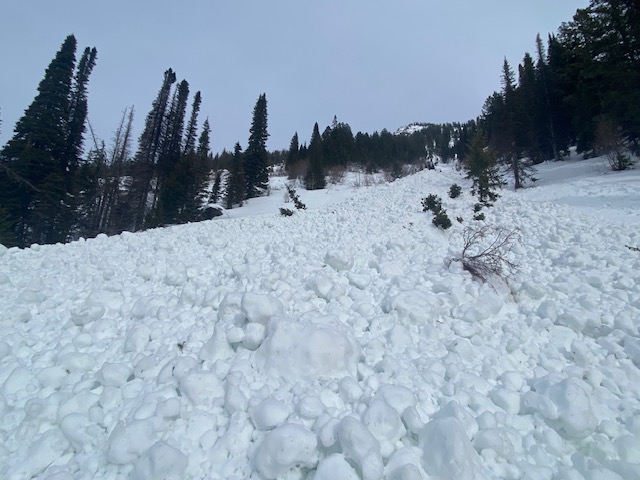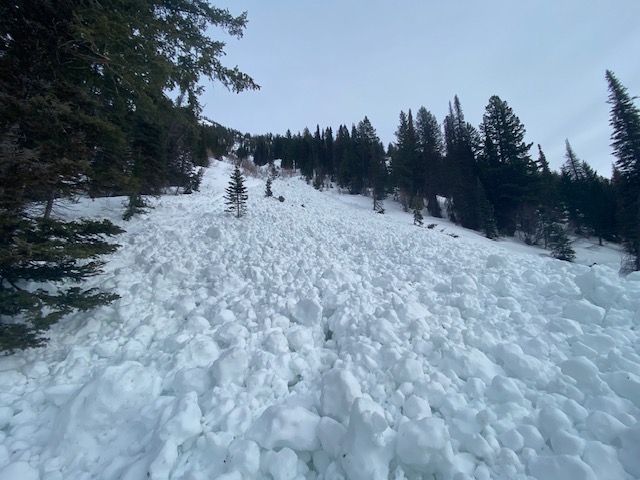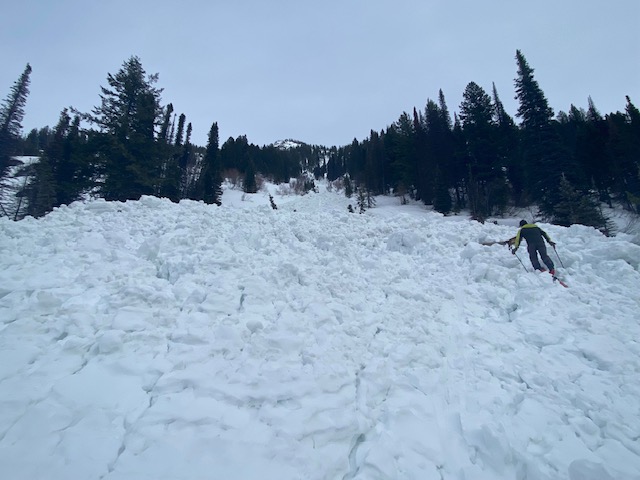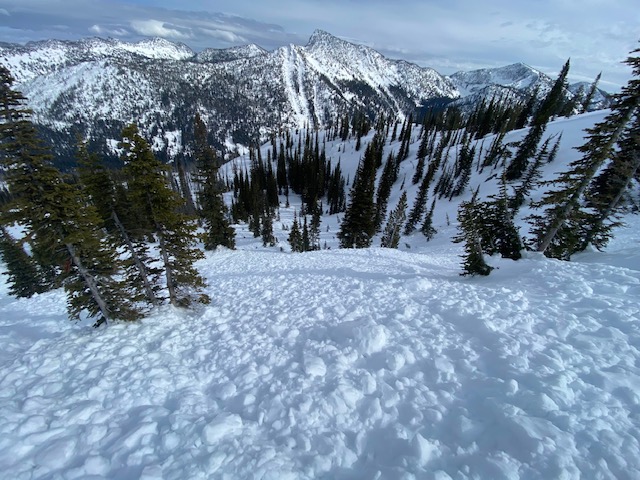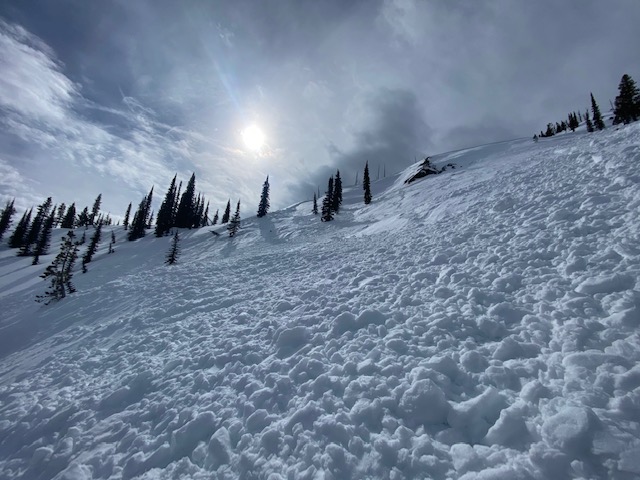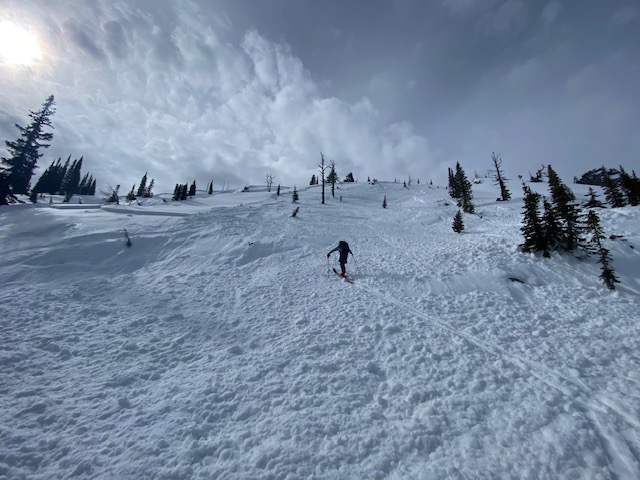Observation Details
Observation Date:
March 3, 2022Submitted:
March 3, 2022Zone or Region:
Lick Creek AreaActivity:
Skiing/SnowboardingLocation:
Lick Creek SummitSigns of Unstable Snow
Observations
Payette Powder Guides staff Marty Rood and Andy Keck toured into the Cathedral Rock/8302 bowl today to continue investigating the wide-spread natural avalanche cycle that occurred on 2/28 and 3/1. We concluded, from what we saw, multiple points:
In general the slab avalanches that ran were a combination of storm-deposited and wind-deposited snow. They were triggered naturally and ran on both the 2/26 (new/old) interface and the 2/14 interface. All of the avalanche we examined ran on a combination of both interfaces. These interfaces both contain rounding, but present 0.5mm near-surface facets.
In general the slab avalanches we observed throughout the canyon all initiated between 7500’ and 7800’. This is believed to be the rain/snow line moving throughout the storm. There were many point release avalanches observed above and below that elevation band, but we didn’t see any crowns outside of that range. There seems to be no defining aspect for these avalanches, as we saw them on all points of the compass and the storm/rain component works with that idea. However there appeared to be some correlation with additional wind-loading that might have caused some additional stress to an already-stressed snowpack and created more slab avalanches in wind-loaded areas, generally north-east aspect.
The avalanches ran in a manner consistent with wet snow, contained within the existing paths and in areas where water would run and confined to the terrain
The avalanches we examined were in the D2 range. While they all ran in a manner that we described as full track, a few seemed to stop short of traditional run out zones. Again we agreed that this was due to the slower nature of wet avalanches.
Looking forward, we agreed that while this was a very exciting natural cycle, as things begin to freeze back up tonight and in days to come, our hazard will drop dramatically.
Media
